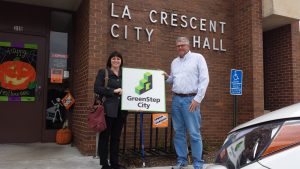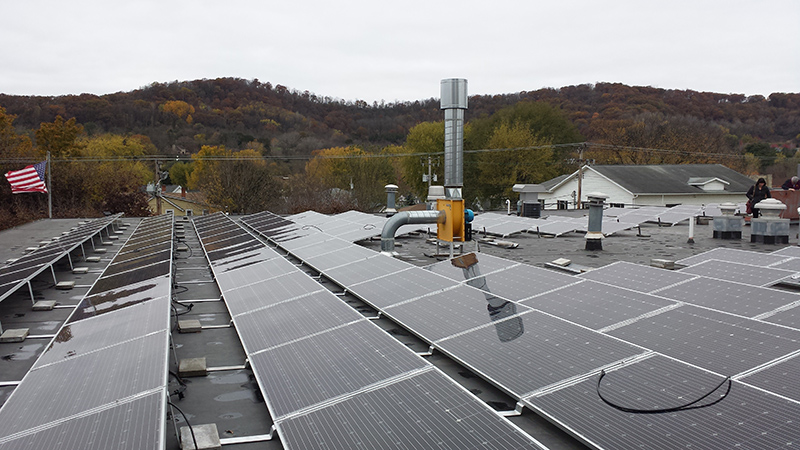This blog post was written by Chris Meyer of the Southeast Minnesota Clean Energy Resource Team
It’s true: the majority of La Crescent is not in Winona County. But, the community has a story to tell about leadership and taking common-sense action. We’re hopeful communities across the state can learn from their experience and understand the financial value in B3 benchmarking.
It’s been just 2 short years since La Crescent, MN (population 5,200) became a GreenStep City in October 2015, but they have big achievements to share. In June of 2017 they advanced to a Step 2 city and City Administrator Bill Waller indicated that they are on track to achieving Step 3 in 2018. They were also one of three finalists in the top 3 “Best of B3 Benchmarking” competition for the state, being narrowly beaten out by the larger Prior Lake.
Waller talked about the opportunities and subsequent energy savings that building energy benchmarking has opened up to the city. After joining the voluntary statewide recognition GreenStep City program, La Crescent partnered with Winona State University to create an internship. It was with the help of the WSU Student Intern, Alison Bettin that La Crescent began to track and compare their building energy use to national benchmarks and against other public buildings in the state of Minnesota. This benchmarking was done through a program called “B3 Benchmarking” which is provided, free of cost, to managers of all public buildings across the state. Now, City Council members review energy use bar charts at their meetings, and says Waller “because the La Crescent City Council has seen the city’s energy use decreasing, they know why benchmarking is worth the effort.”

La Crescent discovered that upgrades to their community center/fire hall, funded by a revenue-neutral loan program available through MiEnergy, had already brought the building’s energy use to 40 percent of the average for similar buildings. In 2017 they won the Made-in-Minnesota incentive lottery and have installed a solar electric array on the roof of the fire station, representing nearly 40 kW of solar PV, which at this location will generate about 50,000 kW/hrs of electricity annually. Remarkably, this installation will meet just over half of the building’s annual electricity demand. The financing mechanism and incentives make this an immediate money-saving effort for the city.
The great work for La Crescent has not stopped there. The lighting at their ice arena was updated to LEDs and, with extensive rebates, will pay for itself in under 3 years and go on to save energy for decades. The arena’s humidification system was upgraded to use newer variable-speed motors with immediate and dramatic energy use reductions. The benchmarking tools show that in the winter of 2016-2017, electricity and natural gas usage at the ice arena fell 60 percent. Waller describes how grant funding paid for the majority of the upgrades. Plans to do more efficiency improvements are underway, as La Crescent is now working on a project to switch from a gas-powered electric ice maintenance machine to an electric version, improving air quality by eliminating exhaust fumes and saving energy from reduced demand for ventilation. The majority of this upgrade is being financed through grants.
Use of benchmarking data has proven so successful that La Crescent’s city staff now uses it to identify new projects. With help from Xcel Energy, the La Crescent Parks Department has identified potential upgrades for the six highest energy-using buildings in their system.
If you would like to learn more about how public building B3 Benchmarking could save your school or municipality money, check out resources on the Clean Energy Resource Team’s website or contact the SE CERT Regional Coordinator, Chris Meyer at chris@cleanenergyresourceteams.org. Use of the benchmarking software is free for public buildings and a variety of resources are available to help communities get started.
